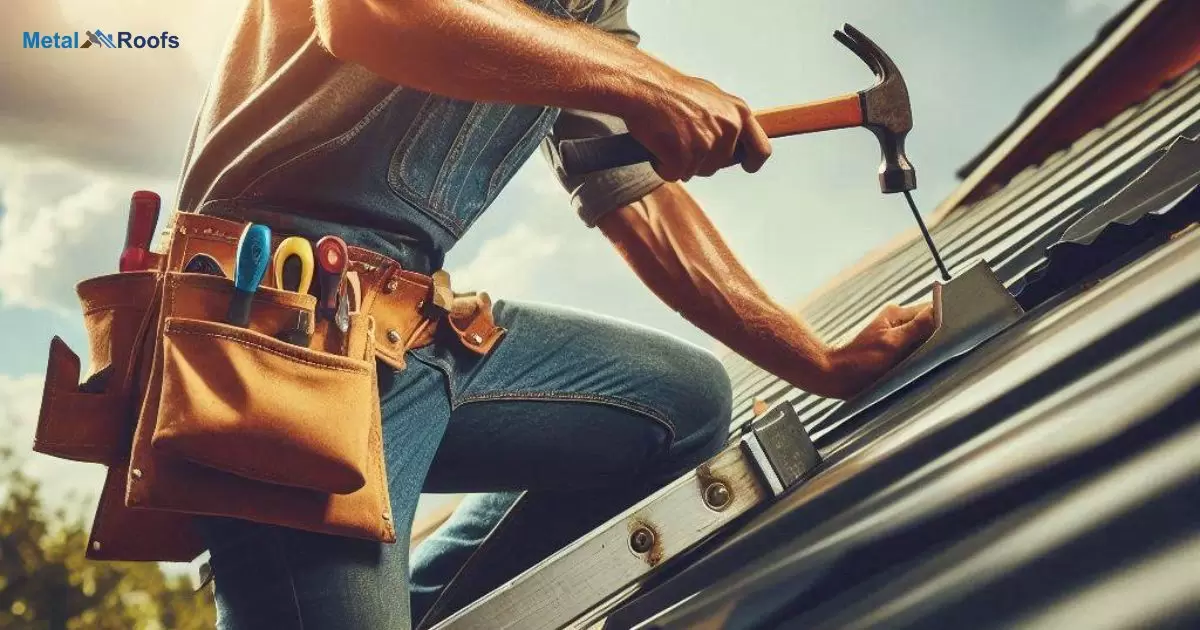Repairing a tin roof means checking for damage, cleaning the surface, fixing rust spots, sealing seams, replacing broken panels, and stopping leaks. Use roofing sealant and follow safety rules. Regularly look for problems and fix them right away to keep the roof in good shape.
Fixing a tin roof can seem hard, but it’s simple with the right steps. You can stop leaks, fix rust, and keep your roof strong. Knowing how to repair a tin roof saves you money and keeps your home safe. Follow a clear plan, and your roof will last for years.
Start by checking your tin roof for damage. Pressure wash a metal roof to remove grime and debris. Clean it well to spot all problems. Fix rust spots and seal seams to stop leaks. Replace broken panels to keep the roof strong. Regular checks help you catch issues early, ensuring your roof stays in great shape for a long time.
Key Takeaways
- Check for damage regularly.
- Clean the roof to spot issues.
- Fix rust spots with primer and paint.
- Seal seams to stop leaks.
- Replace broken panels.
- Use roofing sealant to patch leaks.
Repair Tin Roof
Start by checking your tin roof for any signs of damage. Look for rust, loose seams, and leaks. Clean the surface to remove dirt and debris. This helps you see all the problem areas. Apply rust primer to spots that need it. Use roofing sealant to fix loose seams and small leaks.
Replace any broken panels with new ones. Secure them with screws made for metal roofs. Regularly check your roof to catch issues early. Fix problems right away to keep the roof in good shape. By following these steps, you can keep your tin roof strong and durable for years.
Roof Leaks In Heavy Rain
Roof leaks in heavy rain are common problems. Water can find weak spots, causing damage. Check for rust, loose seams, and broken panels. Clean the roof to spot these issues. Fixing rust and sealing seams can stop leaks. Replace any broken panels to keep your roof strong.
Regular checks are key to preventing leaks. Look for signs of water damage inside your home. This includes stains on the ceiling or walls. Use roofing sealant to patch small leaks. For bigger problems, you may need new panels. Keeping your roof in good shape helps protect your home from heavy rain.
Diy Tin Roof Repair Tips
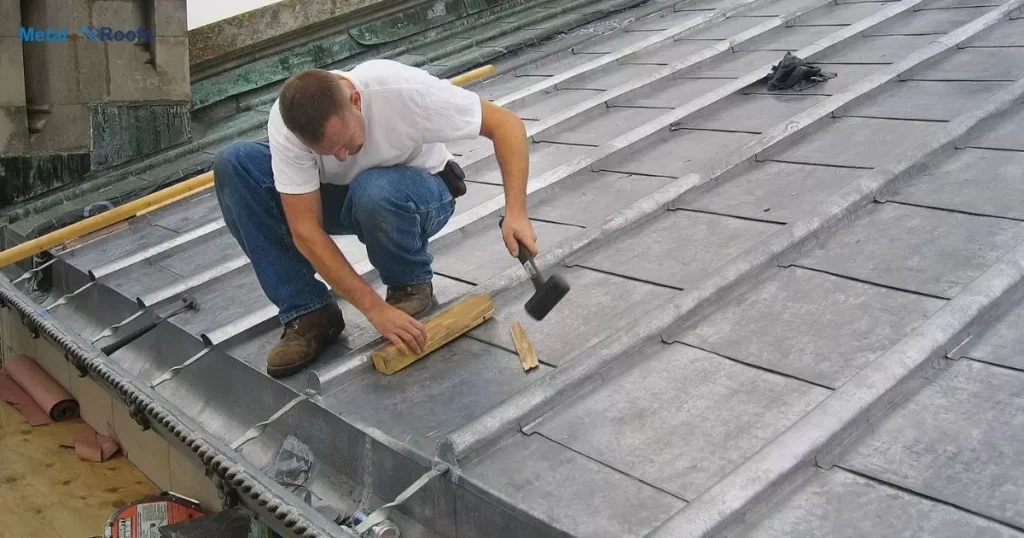
Here are some simple DIY tips for repairing a tin roof:
Inspect the Roof: Look for damaged or loose panels, rust, or holes. Use binoculars for a thorough check from the ground.
Clean the Area: Use a wire brush to remove rust and debris. Clean the surface with a mixture of water and mild detergent. Rinse and let it dry.
Patch Small Holes: Use a tin snip to cut a piece of metal patch larger than the hole. Apply roofing cement around the hole, place the patch over it, and press down firmly. Cover the patch edges with more cement.
Fix Loose Panels: Secure loose panels with galvanized roofing nails or screws. Use a washer to ensure a tight seal.
Seal Seams and Joints: Apply a high-quality roofing sealant to all seams and joints to prevent leaks.
Paint: Once repairs are complete, apply a coat of rust-resistant paint to protect the metal and improve appearance.
Always prioritize safety. Use a sturdy ladder, wear non-slip shoes, and consider having a friend assist.
Sealant For Metal Roof
Sealant for metal roofs stops leaks and protects against rust. It seals seams and cracks, keeping water out. Choose a sealant made for metal roofs. Clean the area before applying the sealant. This ensures it sticks well and lasts longer.
Apply the sealant in dry weather for the best results. Use a brush or caulking gun for even coverage. Check the sealant regularly for wear. Reapply as needed to keep your roof in top shape. A good sealant extends the life of your metal roof.
Common Signs Of Tin Roof Damage
Common signs of tin roof damage include rust spots. These show up as orange or brown patches on the metal. Another sign is loose or missing screws, which can let water in. Look for seams that are separating or coming apart. This can lead to leaks and water damage inside your home.
You might see dents or bends in the panels. These can happen from heavy objects or severe weather. Leaks inside your home are a clear sign of roof problems. Water stains on ceilings or walls point to a damaged roof. Regular checks help you catch these signs early and keep your roof in good shape.
Cleaning The Repair Area
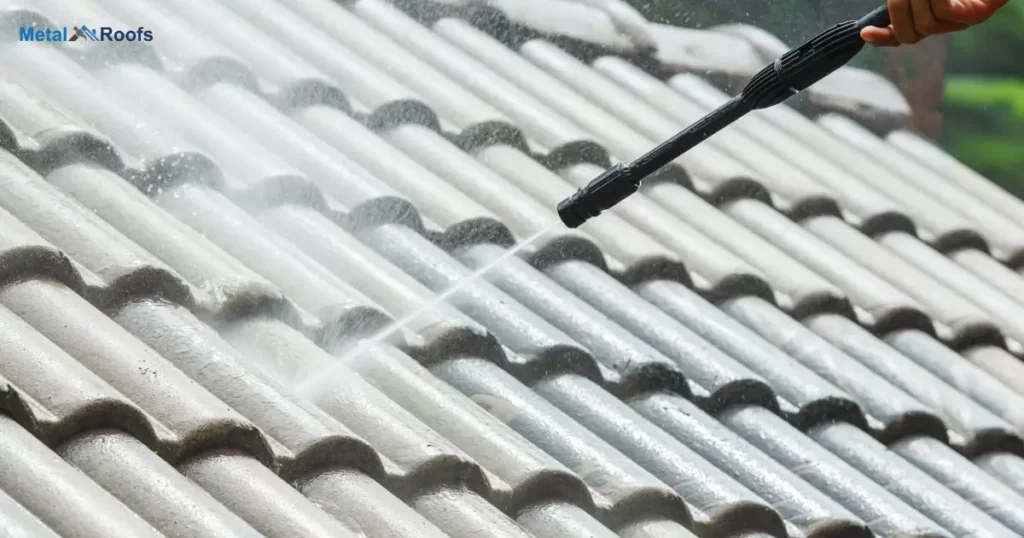
Cleaning the repair area is the next step. Remove leaves, dirt, and debris from the roof. Use a broom or a brush to get rid of loose material. Make sure the surface is dry and free of any grime. This step helps you see all the damage that needs fixing.
After cleaning, inspect the roof for rust and cracks. Look for any areas where water might get in. A clean surface helps the repair materials stick better. It also makes it easier to spot problems that need attention. Proper cleaning sets the stage for successful repairs.
Patching Small Holes And Gaps
Patching small holes and gaps is a key part of roof repair. First, clean the area around the hole. Remove any rust or debris. Apply a roof patch or sealant to cover the gap. Smooth it out to make sure it sticks well. Let it dry completely before checking for leaks.
Small holes can cause big problems if left alone. After patching, check the area to make sure it is sealed. Inspect the roof regularly to find new holes early. Fixing these problems keeps your roof in good shape and prevents future issues.
Maintaining Roof Drainage
Maintaining roof drainage is crucial for keeping your home safe and dry. Clean gutters regularly to prevent clogs and water buildup. Ensure downspouts are clear so water flows away from the foundation. Inspect for leaks or damage to gutters and repair promptly.
Proper maintenance helps prevent water damage to your roof and home. When maintaining roof drainage, focus on prevention and regular inspections. Check for any signs of debris or blockages in gutters and downspouts. Clear them out to ensure proper water flow during rain.
Choosing The Right Repair Materials
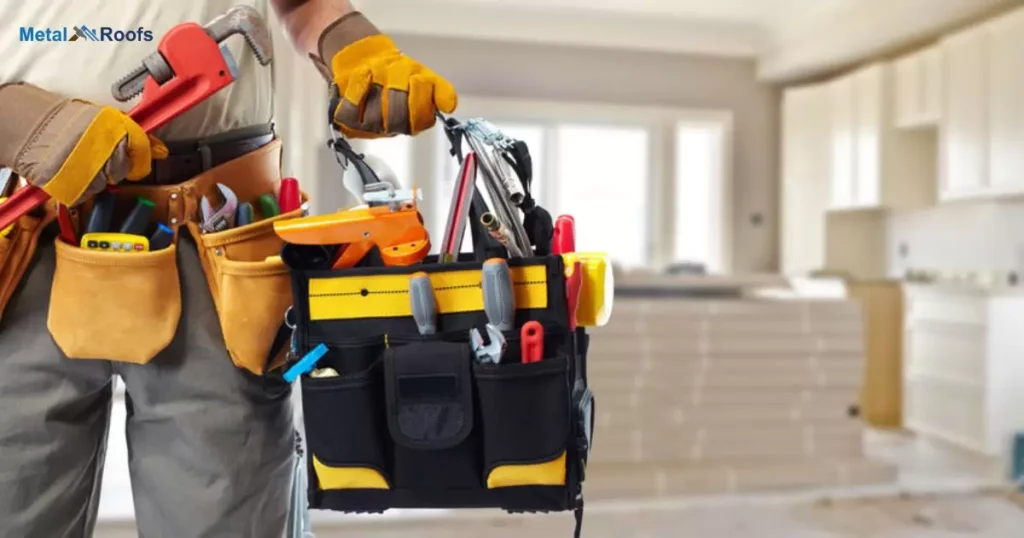
Choosing the right repair material is important for a successful tin roof fix. Look for materials made for metal roofs. Check that they match your roof type and weather conditions. Use a rust-inhibiting primer for rust spots and a durable sealant for seams. Pick high-quality paint or patches to cover any damage.
Good materials make a big difference in your repair job. Check the instructions to use them correctly. This will help you fix leaks and extend your roof’s life. Choose wisely to make your repair last and keep your roof in good shape.
Identify Roof Leaks And Damage
Start by looking at the roof from the ground. Check for missing or damaged shingles and metal panels. Look for rust spots and signs of wear. Watch for water stains on the ceiling inside your home. These can show where leaks are.
Go up on the roof if it is safe. Inspect seams, joints, and flashing. Check for any loose or damaged areas. Make sure there are no blockages in the gutters. Identifying these issues early helps you fix problems quickly.
Repair Larger Holes And Damaged Areas
To repair larger holes and damaged areas, start by cleaning the damaged section. Remove any loose or broken pieces of tin. Next, measure and cut a new piece of tin to fit the hole. Place the new tin over the hole and secure it with roofing screws. Make sure the new piece covers the area well.
After placing the new tin, seal the edges with roofing sealant. This will prevent water from leaking in. Smooth out the sealant to ensure a tight fit. Let the sealant dry completely before walking on the roof. Regularly check the repair to make sure it holds up over time.
Preparing The Repair Area
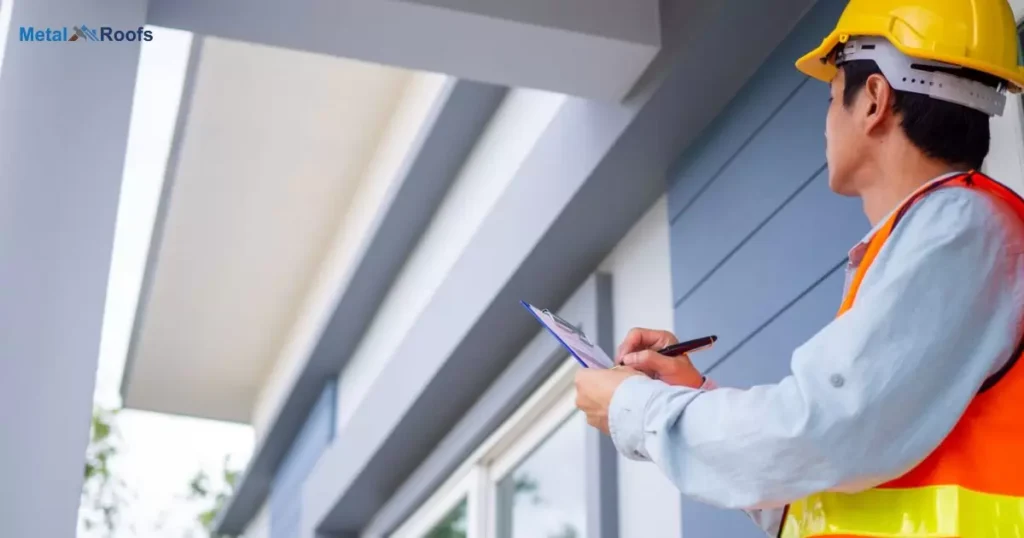
Preparing the repair area starts with cleaning the roof. Remove all debris like leaves and sticks. Use a wire brush to get rid of rust and grime. Make sure the surface is dry and ready for repairs. This step helps the repairs last longer.
Cleaning The Surface
Cleaning the surface is the first step in preparing for repairs. Remove debris like leaves and dirt from the roof. Use a wire brush or pressure washer for a clean surface. Let it dry completely before you start fixing the roof.
Removing Rust
To prepare the repair area, start by removing rust. Use a wire brush or sandpaper to clean the rust off the tin roof. Make sure the area is clean and dry before moving on.
Scuffing The Metal
Scuffing the metal helps the repair materials stick. Use a wire brush or sandpaper to roughen the surface. Make sure to clean off dust before applying any products.
Frequently Asked Questions
How To Repair A Small Hole In A Roof?
To repair a small hole in a roof, first clean the area around the hole. Apply a roofing patch or sealant to cover the hole completely. Press it down and let it dry.
How To Fix A Roof Leak On A Metal Roof?
To fix a roof leak on a metal roof start by finding the leak’s source. Clean the area around the leak. Apply a roofing sealant or patch over the leak. Make sure the patch or sealant covers the spot well.
What Is The Best Sealant For A Metal Roof Leak?
For a metal roof leak you need a strong sealant. Look for products labeled for metal roofs. A good sealant is durable and stops water from getting through.
Conclusion
Repairing a tin roof is straightforward with the right steps. Check for damage and clean the surface before fixing rust. Seal seams and replace broken panels to stop leaks. Use a good sealant for metal roofs and follow safety guidelines.
Regular maintenance keeps your roof strong and long-lasting. Address issues early to avoid bigger problems later. A well-repaired tin roof protects your home and saves money. Keep up with inspections to keep your roof in top shape.
